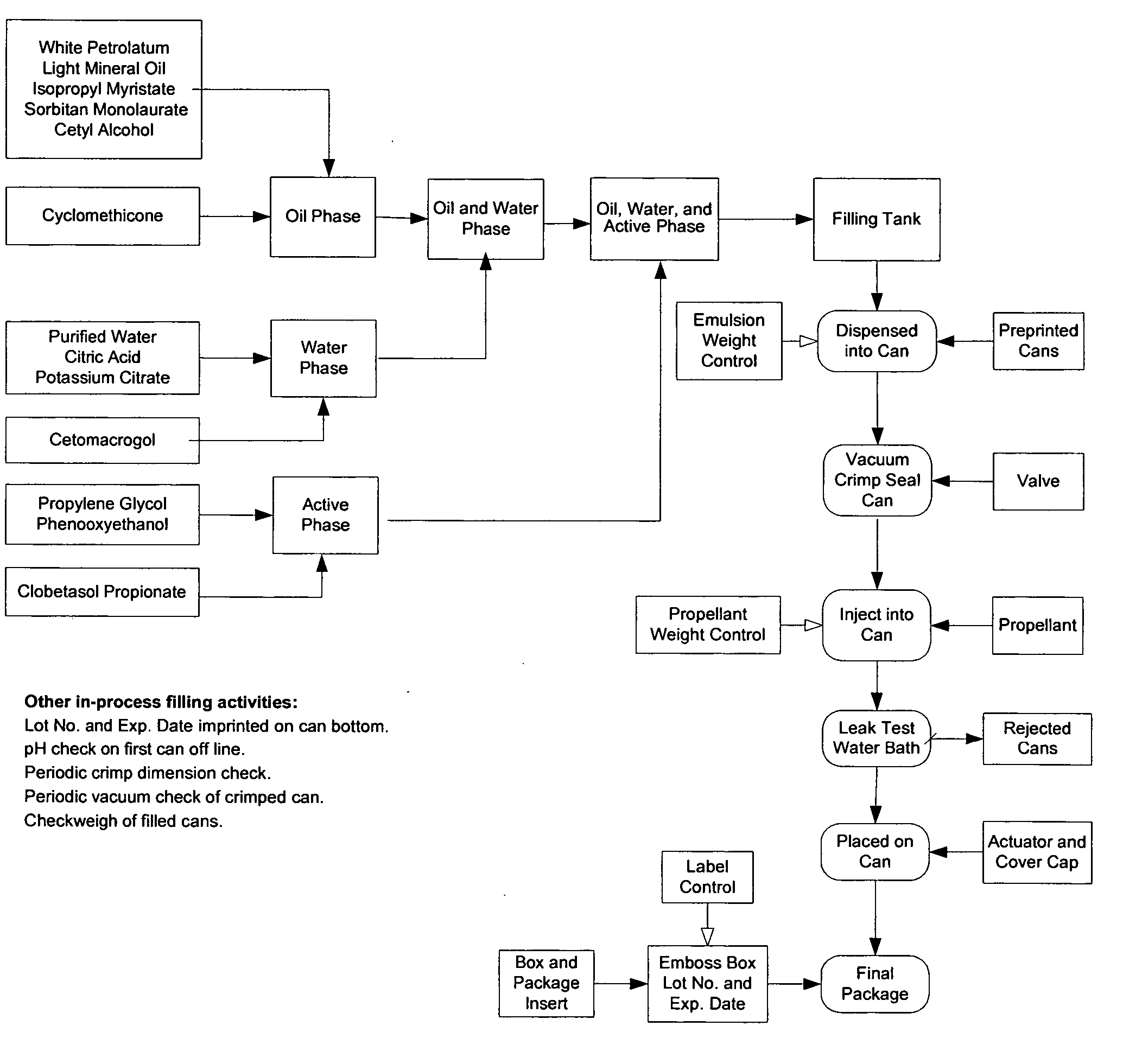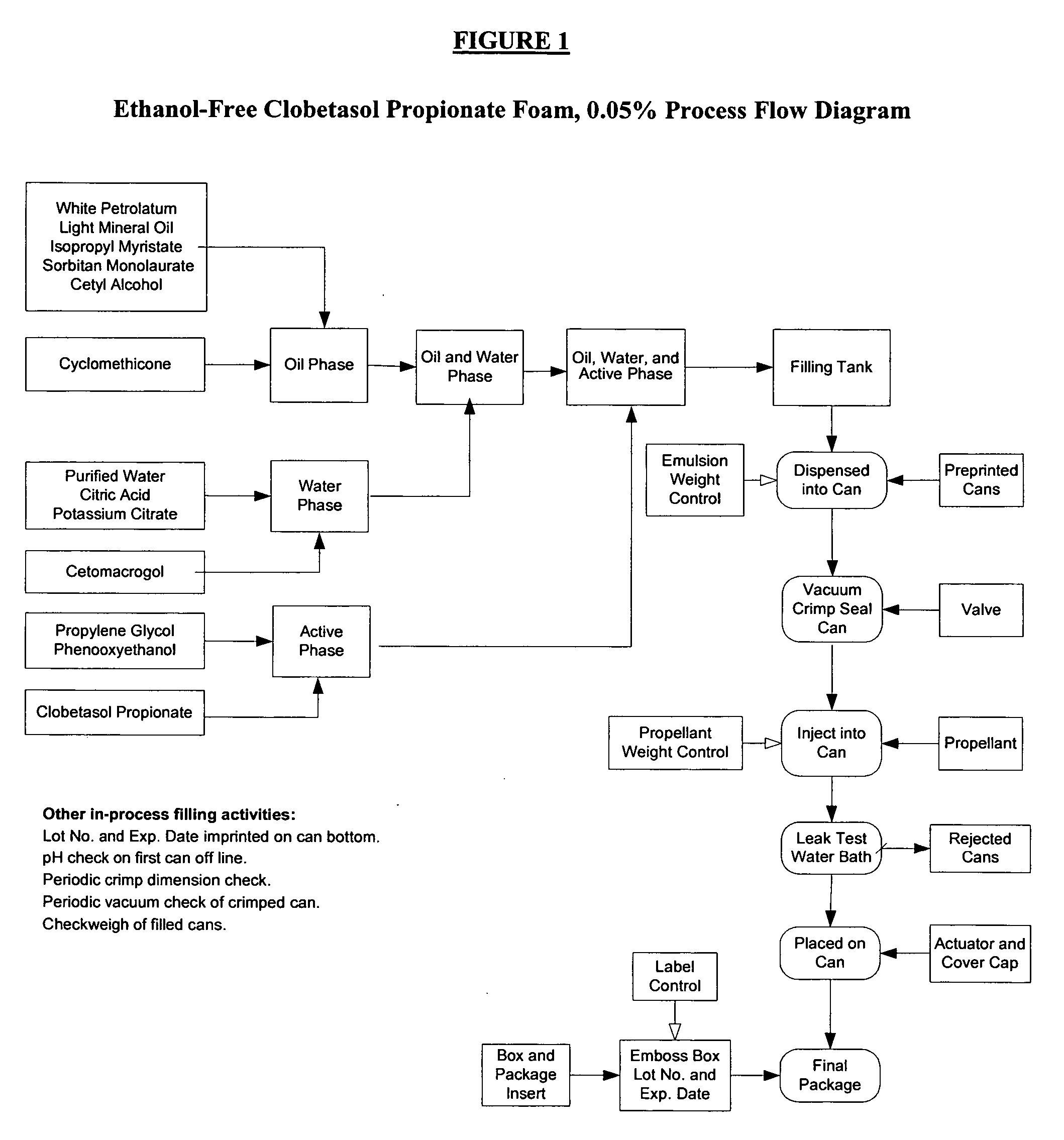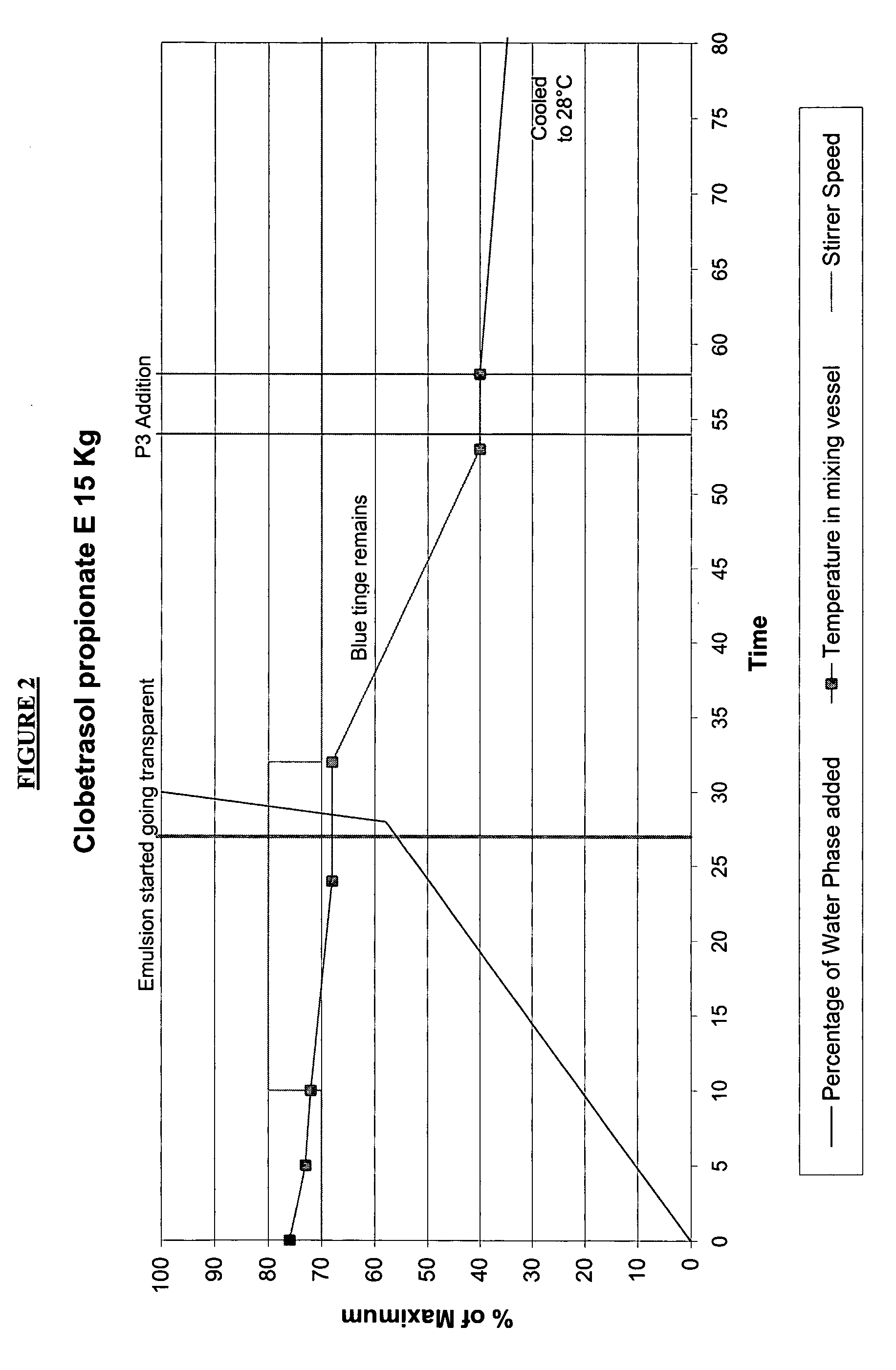Microemulsion process and composition
a microemulsion and microemulsion technology, applied in the field of formulation of microemulsions and submicron emulsions, can solve the problems of not being able to guarantee the product is a microemulsion, the amount of water that can be added to a given system of emulsifiers and oil may not always be high enough for the application in mind, and the difficulty of emulsion formulation
- Summary
- Abstract
- Description
- Claims
- Application Information
AI Technical Summary
Benefits of technology
Problems solved by technology
Method used
Image
Examples
examples
[0140] Examples 1 and 1A show a composition having surfactant ratios according to the prior art, and wherein propylene glycol, generally considered disruptive of sub-micron emulsions is added together with other constituents in a single stage aqueous phase of the process. These examples are provided for comparison purposes and do not illustrate the invention.
[0141] Examples 2-5A show six different compositions using the pharmaceutically active ingredients clobetasol propionate, desonide or betamethasone-17-valerate in formulations according to preferred embodiments of the invention wherein the surfactant ratios are of the desired ratio range. Examples 4 and 5 in accordance with the invention are compositions which include propellant. The examples 2-5A may be further processed into formulations useful as a lotion, spray, gel, paste, foam or any other suitable dosage form.
example 1
[0142]
20% PG / pH 6% w / wPhase 1 - Oil PhaseClobetasol Propionate0.0475Petrolatum7.50Mineral Oil5.00Isopropyl Myristate7.50Cyclomethicone5.00Cetyl Alcohol2.00Sorbitan Laurate1.50Phase 2 - Aqueous PhaseWater38.7525Ceteareth-206.50Citric Acid0.04Potassium Citrate0.16Propylene Glycol20.00Phenoxy Ethanol1.00Phase 3 - Propellant PhaseHydrocarbon Propellant P705.00Total100.00
example 1a
[0143]
20% PG / pH 6% w / wPhase 1 - Oil PhaseClobetasol Propionate0.05Petrolatum7.90Mineral Oil5.26Isopropyl Myristate7.90Cyclomethicone5.26Cetyl Alcohol2.11Sorbitan Laurate1.58Phase 2 - Aqueous PhaseWater40.79Ceteareth-206.84Citric Acid0.04Potassium Citrate0.17Propylene Glycol21.05Phenoxy Ethanol1.05Emulsion concentrate Total100.00
[0144] Examples 1 and 1A show a surfactant ratio of Ceteareth-20:sorbitan laurate:cetyl alcohol of 6.5:1.5:2.0 wherein propylene glycol is introduced in one stage to the aqueous phase of the composition. This product separates on standby, has poor in-can redispersability and requires continuous mixing in process which is costly in large scale manufacture.
PUM
| Property | Measurement | Unit |
|---|---|---|
| Temperature | aaaaa | aaaaa |
| Temperature | aaaaa | aaaaa |
| Temperature | aaaaa | aaaaa |
Abstract
Description
Claims
Application Information
 Login to View More
Login to View More - R&D
- Intellectual Property
- Life Sciences
- Materials
- Tech Scout
- Unparalleled Data Quality
- Higher Quality Content
- 60% Fewer Hallucinations
Browse by: Latest US Patents, China's latest patents, Technical Efficacy Thesaurus, Application Domain, Technology Topic, Popular Technical Reports.
© 2025 PatSnap. All rights reserved.Legal|Privacy policy|Modern Slavery Act Transparency Statement|Sitemap|About US| Contact US: help@patsnap.com



